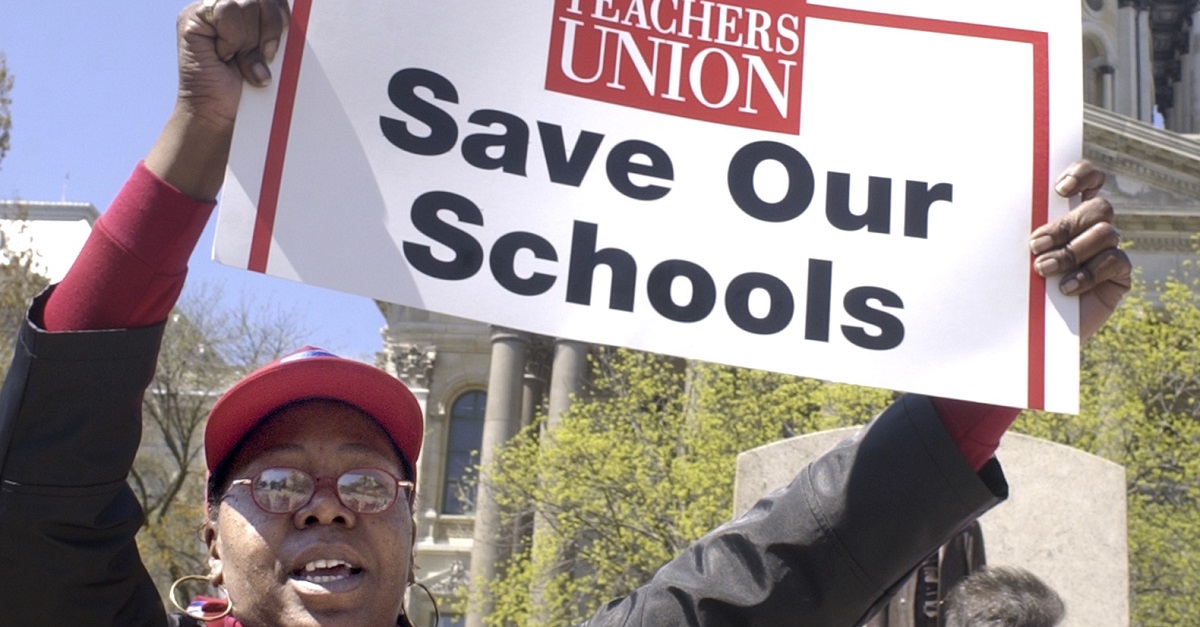The Big Two teachers unions prefer elections for state superintendent and school boards to be low-profile and low-turnout affairs. All the better to retain their influence over education without spending any of the $2.2 billion they collect from teachers, usually by force of law.
Videos by Rare
So you know the NEA and AFT are unhappy about having to spend money in California to help that state’s superintendent, Tom Torlakson, in his struggling re-election campaign against school reformer Marshall Tuck. This is because the nation’s highest-profile statewide election not involving a gubernatorial seat may have become the most-public referendum on their very existence.
Last week, the Big Two launched a series of commercials claiming that Tuck, a one-time aide to former Los Angeles Mayor Antonio Villaraigosa, would “sell off our schools and sell out our kids” if he won office.
The NEA and AFT also took aim at Tuck for taking donations from big-named reform philanthropists such as entrepreneur Eli Broad and former New York City Mayor Michael Bloomberg – even as the two unions provide the overwhelming majority of the $5.2 million Torlakson has collected for his campaign (and millions more spent on independent ads on his behalf).
A former state senator who narrowly won his post four years ago, Torlakson has long been a reliable ally of the Big Two and other defenders of traditional public education. Since taking office, Torlakson has stood by as the NEA and AFT defeated measures such as Senate Bill 1530, which would have made it easier for school districts to fire teachers accused of abusing and molesting children.
Probably thinking that he would have an easy time winning re-election, Torlakson decided in August to file an appeal in Vergara v. California, the lawsuit that forces the Golden State to end near-lifetime employment for public school teachers that teachers union have long defended.
The appeal cemented the superintendent’s ties with the NEA and AFT. That has proven to be a huge mistake.
The Vergara ruling has not only proven to be popular with centrist Democrats and conservatives within the school reform movement, but also among the public as well. Six out of 10 California voters surveyed by Policy Analysis for California Education and the University of Southern California’s Rossier School of Education agreed that teachers should no longer be given near-lifetime employment.
Torlakson’s decision has given Tuck a chance to pull off what once was considered an unlikely upset. Last month, a poll conducted by Field Research Corp., showed Tuck leading Torlakson by three percentage points among likely voters. While 41 percent of likely voters surveyed remain undecided, the tendency of those voters to split two-to-one in favor of challengers gives Tuck the edge.
Even if Torlakson manages to win next week, it may be one of the few successes the two unions will manage this election year.
By Election Day, the NEA and AFT will have likely spent as much as $80 million on backing political campaigns (and even more over the past two years). This, by the way, doesn’t include the millions both unions spend every year on lobbying and securing alliances with progressive groups. Yet little of this spending will get them much in the way of victories.
Two of their biggest targets, Wisconsin Gov. Scott Walker and Michigan Gov. Rick Snyder (both of whom have successfully passed laws that have weakened the unions financially and politically), will likely win re-election by narrow margins. Another incumbent targeted by the two unions, Florida Gove. Rick Scott, will also likely return to office.
Two other governors that have successfully beaten back teachers’ unions, John Kasich in Ohio and Bill Haslam in Tennessee, are cruising to landslide victories.
Even in the states where the AFT and NEA will back successful Democratic candidates, the winners (including Connecticut Gov. Dan Malloy) are strong school reformers.
Meanwhile NEA and AFT missteps have further alienated them from what should be Democrat allies.
Earlier this year, the AFT’s New York State local refused to endorse Gov. Andrew Cuomo’s re-election bid. This will likely result in the governor (and Democratic presidential aspirant) further supporting the expansion of charter schools and the continued revamp of teacher evaluations that are the bane of the union’s existence.
The NEA’s Massachusetts Teachers Association may have lost an ally in Democratic gubernatorial nominee Martha Coakley after it took umbrage at her support for increasing the number of charter schools in the state.
Then there’s Rhode Island, where the NEA backed political scion Clay Pell for the Democratic gubernatorial nomination as an act of revenge against both state treasurer Gina Raimondo (who had the nerve to radically reform the state’s pension system), and Providence Mayor Angel Tavares (who launched charter schools in his city).
It didn’t work. Raimondo’s victory last month all but assures that the NEA and other public-sector unions will not have a political patron for their cause.
With all the hits the NEA and AFT have taken this year, they sorely need Torlakson to win re-election next week. But they are likely in for a rude awakening instead.



